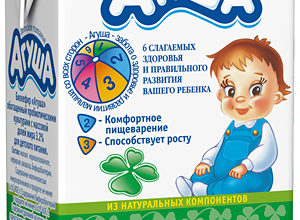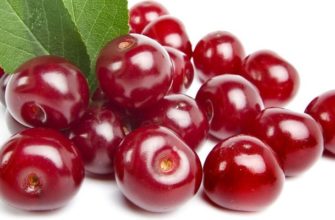Starting from 4-6 months of age (depending on whether the child is on the HB and IV), the child needs additional nutrition, in other words, complementary foods. Quite often, young and not yet experienced in feeding moms are lost. This is especially true of the question of when it is possible to start giving a baby not only vegetable, fruit purees and juices, but also when it is possible to start feeding a baby meat. It is necessary to choose meat puree for the first feeding carefully, or cook it yourself guided by some rules, meat is the main supplier of protein, calcium, phosphorus for the rapidly growing body of infants, so the choice of meat (or ready-made baby food from meat) should be approached with all responsibility.

From what age should meat be fed
As for the optimal period for introducing meat feeding into the child’s diet, here the opinions of experts are divided: some believe that meat can be given starting from 4-6 months; others are convinced that a more favorable period for entry is 8–9 months.
However, the introduction of meat into a child’s diet depends on several other factors:
- individual features of the development of the baby;
- physical development of the baby, indicators of its height and weight;
- type of feeding (breastfeeding or artificial feeding).
Thus, children who are being breast-fed need early introduction of complementary foods, whether it be juices, fruit, vegetable or meat purees. Naturally fed infants receive essential macronutrients along with breast milk. Therefore, the introduction of complementary foods for them can be postponed for a couple of months.
Rules for introducing meat into a child’s diet
Baby puree is introduced after vegetable / fruit purees, after juices and cereals.
Before offering the baby meat feeding, it is advisable to familiarize yourself with some of the rules of the first feeding:
- Meat (like any other complementary foods) should be given only to a healthy child.
- It is advisable to refrain from introducing complementary foods in the following cases:
- if the child has been vaccinated or vaccination is expected soon;
- during the summer heat;
- if the baby is unwell or naughty.
- A new product should be introduced no earlier than 2 weeks after the introduction of the previous product into the child’s diet.
- The volume of the first feeding should be 5-10 g (1-2 teaspoons). It is better if mashed meat is added to the vegetable familiar to the child. You can also “soften” mashed meat with breast milk or a milk mixture.
- Gradually, it is necessary to increase the daily dose of complementary foods, so that by 9-12 months the child will consume 60-70 g.
- When using canned products, you need to pay special attention to the composition, make sure that there are no concentrates, GMOs and other substances harmful to the baby.
- For the first feeding, one-component products should be chosen (rabbit, turkey or chicken is best).
How to mashed meat
Baby meat purees should be given in a warm form before breastfeeding or milk formula. Complementary foods should be offered from a spoon. The child should be in a sitting position.
Meat complementary foods, like any other, are offered at lunchtime to observe the baby’s reaction to the new product during the remaining half of the day.
Mashed meat is given to the child once a day.
Meat Products
Cooking mashed potatoes at home
Despite the convenience of consuming canned baby food, it is considered more reliable and safe to make mashed meat from meat at home.
- For the preparation of meat complementary foods, it is recommended to use lean meats (chicken, turkey, rabbit).
- Small pieces of meat are freed from veins, bones, fat and boiled for 1-1.5 hours. For cooking, you can use a slow cooker or a double boiler.
- After the meat is ready, it is thoroughly crushed using a blender or meat grinder (it is recommended to scroll 2-3 times).
- Then the resulting mass is passed through a fine strainer.
- To obtain mashed potatoes, breast milk, milk mixture, cereal or vegetable puree are added to the crushed meat.
Important:
- When cooking meat (and also directly in mashed meat) you do not need to add salt and spices.
- For each feeding, only freshly prepared meat should be used.
5 mistakes in the introduction of complementary foods
Ready Meat Puree
Preserved canned meat purees have the following advantages over mashed potatoes that you yourself cook:
- high quality baby food;
- guaranteed composition;
- chemical safety (lack of flavors, dyes, preservatives, antibiotics);
- microbiological safety of canned food;
- consistency with the age requirements of the child;
- careful quality control.
The choice of ready-made products for baby food is quite large. The following manufacturers are especially popular:
- "Topic". Children's meat purees of this manufacturer are distinguished by a large selection, high quality, affordable prices. The products are designed for nutrition of children from 6 months.
- Agusha. The composition of baby food contains only natural ingredients. This trademark has been repeatedly noted by international communities as the best in the production of baby food.
- "Grandmother's basket". The producer surprises with the variety of baby purees offered - both single-component and multi-component (consisting of meat and various vegetables).
- "Frutonyanya". Well-known domestic manufacturer of baby food, popular due to its wide range and reasonable pricing policy.
- "Heinz". The products of this manufacturer are available in meat, meat and vegetable, fish and vegetable purees. Baby food is developed in accordance with all standards and requirements of GOST.
Parents should be aware that not all children tolerate complementary foods, especially vegetable and meat. Moreover, each crumb has its own preferences: someone will like veal puree, another a tender turkey, and a third a rabbit. Moms should be fully oriented to the taste preferences of their child.
Given all the recommendations made, as well as the advice of a pediatrician, you can safely proceed with the introduction of such an important and necessary product for a small organism as meat -meat in a child’s diet - the rules for introducing meat feeding
We read on the topic of first feeding:
We introduce mashed vegetables (rules + 3 recipes).
- Introduce the first cereals into the diet.
- 5 questions moms about store baby puree.
- We introduce meat soup.
- We can’t but tell about some problems, when a child refuses to eat complementary foods (how to deal with it)
[sc: rsa]
Video: putting mashed meat
Features of putting mashed meat into the baby's diet: which meat is hypoallergenic? How much meat puree should be added to the diet?









Do not consider it antiadvertising, but I do not really trust canned puree. Yes, of course, it is very dreary to cook mashed meat for crumbs yourself, but you certainly know that this is meat, not soy and starch.
My 6 months. I bought ready-made meat puree, but it eats poorly. Only Agush is more or less normal. Our pediatrician also endorses this brand. I prefer to cook at home. I do not really trust purchased food
And I trust the purchase of mashed potatoes more than it is not clear what kind of meat is on the shelves. Nuts in jars retain all the useful qualities. And we cook 1.5 hours and nothing useful remains
After the first mention of juice - the article can not be taken seriously.
Lamb is stiffer than beef because it contains more connective tissue. The biological value of mutton proteins approximately corresponds to that of beef proteins, but mutton contains slightly less salts of potassium, phosphorus and iron. Lamb is a low-allergenic meat. Lamb is introduced into the children's menu as the last of all types of meat, as it is very oily, and mutton fats are the most refractory.
If you cook the meat puree yourself, then be sure to soak the meat in water for several hours and steam cook, so that all micro and macro elements remain useful. The article is about nothing.